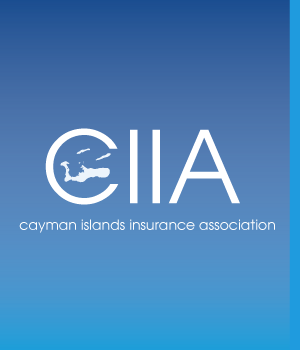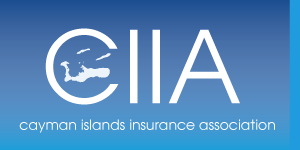The Resource Center provides a glossary of insurance terms to help you understand the various insurance wordings that may appear in your quotes, cover notes & policies.
Glossary of Terms
Health Insurance
Life Insurance
Property and Casualty
A B C D E F G H I J K L M N O P Q R S T U V W X Y Z
Cash Refund Annuity
A form of annuity contract which provides that, if at the death of the annuitant installments paid to him have not totaled the amount of the premium paid for the annuity, the difference will be paid to a designated beneficiary in a lump sum.
Cash Surrender Value
The amount of cash due to an insured who surrenders Cash Value Life Insurance. Such surrender, with consequent termination of all insurance benefits, is sometimes called “cashing out” or “cashing in” a policy. See also Non-forfeiture Values.
Cash Value
See Cash Surrender Value. (LI)
Cestui Que Vie
The person whose life measures the duration of a trust, gift, estate, or insurance contract. Thus, in Life and Health Insurance it is the person on whose life or health the policy is written, commonly called the insured, policyholder, or policy owner.
Chartered Life Underwriter (CLU)
A designation granted by the American College of Life Underwriters upon successful completion of a series of examinations. (LI)
Classified Insurance
Life or Health Insurance on risks which do not meet the standards for the regular manual rate. See also Substandard. (LI,H)
Cleanup Fund
A term commonly used to designate policies whose express purpose is to pay final expenses of death.
CLU
See Chartered Life Underwriter.
Collateral Assignment
Assignment of a Life Insurance policy or its value, as security for a loan. In the event of default, the creditor would receive proceeds or values only to the extent of his interest.
Collection Book
The debit agent’s record book showing the amount collected on each policy, the week of the collection, and the policy period for which the premium has been paid.
Collection Commission
A percentage of premiums collected, which is paid to an agent as the commission on his collections of Debit Life Insurance premiums. (LI)
Combination
A term used to describe an agent, agency or insurer that sells both Industrial Life Insurance and Ordinary Life policies. (LI)
Combination Plan
In pensions this is a term applied to the combining of Life Insurance contracts with a fund called a side fund or auxiliary fund. The purpose is to increase the amount of money available for a pension or annuity at some future date.
Combination Plan Reinsurance
A form of combined reinsurance which provides that, in consideration of a premium, which is a fixed percentage of the ceding company’s subject premium on the business covered, the reinsurer will indemnify the ceding company for the amount of loss of each risk in excess of a specified retention and subject to a specified limit and, after deducting the excess recoveries on each risk, the reinsurer will indemnify the ceding company against a fixed quota share percent of all remaining losses.
Combined Annuity Mortality Table
A mortality table which was published in 1928 for use in determining rates for group annuities.
Common Accident
An accident in which two or more persons are injured.
Common Disaster
A situation in which the insured and the beneficiary appear to die simultaneously with no clear evidence of who died first.
Common Disaster Clause
A clause sometimes added to a Life Insurance policy that provides a means for the insurer to distribute the proceeds of the policy in the event of a common disaster.
Commutation Rights
The right of a beneficiary to receive, in one sum, the unpaid payments remaining under an installment option which was selected for the settlement of the proceeds or values of a Life Insurance policy.
Conditional Binding Receipt
This is the more exact terminology for what is often called a binding receipt. It provides that if a premium accompanies an application, the coverage will be in force from the date of application or medical examination, if any, whichever is later, provided the insurer would have issued the coverage on the basis of the facts revealed on the application, medical examination and other usual sources of underwriting information. A Life and Health Insurance policy without a conditional binding receipt is not effective until it is delivered to the insured and the premium is paid.
Conditional Vesting
A form of vesting in a contributory pension plan under which entitlement to a vested benefit is conditional upon non-withdrawal of the participant’s contribution. See also Vesting.
Contestable Clause
A provision in an insurance policy setting forth the conditions under which, or the period of time during which the insurer may contest or void the policy. After that time has lapsed, normally two years, the policy cannot be contested.
Contingent Beneficiary
A person(s) named to receive policy benefits if the primary beneficiary is deceased at the time the benefits become payable.
Contributory
A general term used to describe a plan of employee coverage in which the employee pays at least part of the premium.
Control Provision
A policy provision found most frequently in juvenile contracts, providing that ownership control is to be exercised for a stated or indefinite duration by a person other than the one whose life is insured.
Conversion Privilege
This is the right of an individual to convert a Group Health or Life policy to an individual policy, should the individual cease to be a member of the group. Usually this can be done without a physical examination.
Convertible
A policy that may be changed to another form by contractual provision and without evidence of insurability. Most Term policies are convertible into permanent insurance.
Coordination of Benefits (COB)
A group policy provision which helps determine the primary carrier in situations where an insured is covered by more than one policy. This provision prevents an insured from receiving claims overpayments.
Cost of Insurance
The amount a policy owner pays to an insurer, minus what he or she gets back from the insurer. This expression is used when determining the true cost of permanent forms of Life Insurance to a policy owner. It considers the fact that premiums are paid in, but also that an actual cash value is being built up, which is the portion that the insured will get back from the insurance.
Cost of Insurance Charge
Another term used to describe the charge for the pure insurance protection element of a life insurance contract. It is also known as the Mortality Charge.
Cost-of-Living Rider
Designed to adjust policy benefits in relation to the change in the economic climate. The majority of such riders are tied to changes in the Consumer Price Index (CPI). The amount of insurance may be automatically increased, without evidence of insurability, at predetermined periods for a maximum amount.
Credit Life Insurance
A group life insurance contract whereby a creditor is protected in the event of death of the insured prior to the indebtedness being paid in full.
Cross Purchase
A form of Business Insurance in which each party to a mutual agreement (usually to buy out a disabled or deceased co-owner) insures each of the other parties.
Crude Death (or Mortality) Rate
The ratio of total deaths to total population during any given period. See also Mortality Rate.
Current Disbursement
The funding and disbursement of pension benefits as they become due. Also known as “pay-as-you-go.” In the long run, this is the most costly method of funding pension plans.
Current Future Service
The amount of pension payable for each year of future participation in the pension plan.
Current Service Benefit
The portion of a participant’s pension benefit that relates to his credited service in a contemporary period, usually 12 months.


